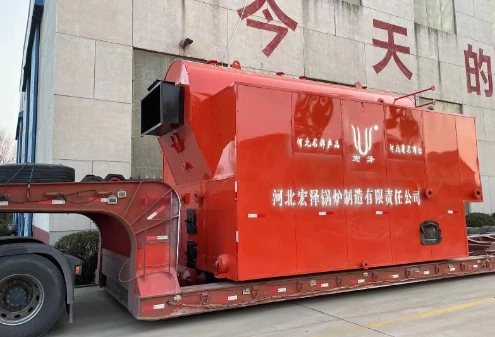
ມ.ກ. . 19, 2025 01:45 Back to list
steam boiler types
Understanding the different types of steam boilers can significantly enhance one's ability as a professional looking to select or maintain these systems effectively. Steam boilers are integral to a vast range of industrial and commercial applications, and knowing their classifications, functionalities, and benefits can aid in making well-informed decisions.
4. Condensing Boilers focus on maximizing energy efficiency by recovering heat from exhaust gases that would typically be ejected into the atmosphere. This reclaimed heat is used to preheat the water entering the boiler system, increasing overall efficiency and providing substantial savings in energy costs. Condensing boilers are characterized by their potential to achieve 90% or more energy efficiency. When choosing a steam boiler, it's crucial to consider factors such as operating pressure, capacity, and fuel type, alongside the specific requirements of your industry or process. For this reason, consultation with industry experts, alongside utilization of precise specifications, can guide in selecting a boiler system that aligns with your operational ambitions while ensuring safety and reliability. Professional maintenance and adherence to standards and regulations are authoritative measures to safeguard the efficient and trustworthy operation of steam boilers. Regular inspection by certified professionals ensures longevity and optimal function, mitigating the risks of system failures and potential hazards. Moreover, understanding local and global environmental regulations plays a fundamental role in selecting the appropriate boiler technology, especially with growing legislation towards reducing emissions. Trust in industry-leading brands that offer certifications and have a track record of reliability reinforces the integrity of steam system operations. Expertise in steam boiler technology not only supports operational efficiency but also contributes to saving costs, enhancing safety, and promoting environmental responsibility. Exploring these diverse types of steam boilers offers insights into making informed decisions to meet the evolving demands of industrial applications while promoting sustainable practices.


4. Condensing Boilers focus on maximizing energy efficiency by recovering heat from exhaust gases that would typically be ejected into the atmosphere. This reclaimed heat is used to preheat the water entering the boiler system, increasing overall efficiency and providing substantial savings in energy costs. Condensing boilers are characterized by their potential to achieve 90% or more energy efficiency. When choosing a steam boiler, it's crucial to consider factors such as operating pressure, capacity, and fuel type, alongside the specific requirements of your industry or process. For this reason, consultation with industry experts, alongside utilization of precise specifications, can guide in selecting a boiler system that aligns with your operational ambitions while ensuring safety and reliability. Professional maintenance and adherence to standards and regulations are authoritative measures to safeguard the efficient and trustworthy operation of steam boilers. Regular inspection by certified professionals ensures longevity and optimal function, mitigating the risks of system failures and potential hazards. Moreover, understanding local and global environmental regulations plays a fundamental role in selecting the appropriate boiler technology, especially with growing legislation towards reducing emissions. Trust in industry-leading brands that offer certifications and have a track record of reliability reinforces the integrity of steam system operations. Expertise in steam boiler technology not only supports operational efficiency but also contributes to saving costs, enhancing safety, and promoting environmental responsibility. Exploring these diverse types of steam boilers offers insights into making informed decisions to meet the evolving demands of industrial applications while promoting sustainable practices.
Share
Prev:
Latest News
-
High-Efficiency Commercial Oil Fired Steam Boiler for Industry
NewsJul.30,2025
-
High-Efficiency Biomass Fired Thermal Oil Boiler Solutions
NewsJul.30,2025
-
High Efficiency Gas Fired Thermal Oil Boiler for Industrial Heating
NewsJul.29,2025
-
High-Efficiency Gas Fired Hot Water Boiler for Sale – Reliable & Affordable
NewsJul.29,2025
-
High Efficiency Biomass Fired Hot Water Boiler for Industrial and Commercial Use
NewsJul.29,2025
-
High-Efficiency Biomass Fired Hot Water Boiler for Industrial Use
NewsJul.28,2025
Related PRODUCTS
Copyright © 2025 HEBEI HONGZE BOILER MANUFACTURING CO., LTD. All Rights Reserved. Sitemap | Privacy Policy






















